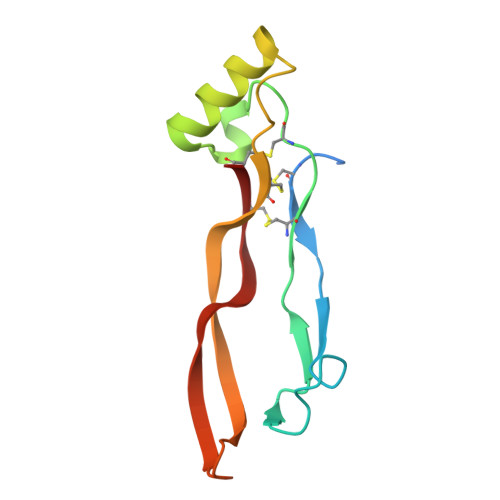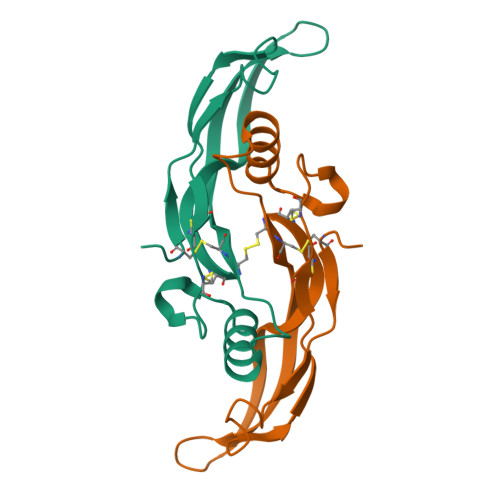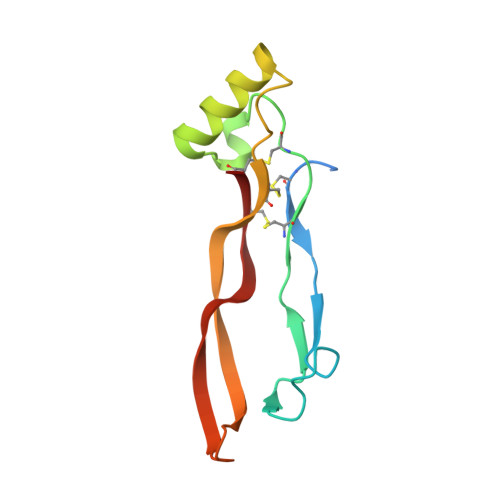Designer Nodal/BMP2 Chimeras Mimic Nodal Signaling, Promote Chondrogenesis, and Reveal a BMP2-like Structure.
Esquivies, L., Blackler, A., Peran, M., Rodriguez-Esteban, C., Izpisua Belmonte, J.C., Booker, E., Gray, P.C., Ahn, C., Kwiatkowski, W., Choe, S.(2014) J Biological Chem 289: 1788-1797
- PubMed: 24311780
- DOI: https://doi.org/10.1074/jbc.M113.529180
- Primary Citation of Related Structures:
4N1D - PubMed Abstract:
Nodal, a member of the TGF-β superfamily, plays an important role in vertebrate and invertebrate early development. The biochemical study of Nodal and its signaling pathway has been a challenge, mainly because of difficulties in producing the protein in sufficient quantities. We have developed a library of stable, chemically refoldable Nodal/BMP2 chimeric ligands (NB2 library). Three chimeras, named NB250, NB260, and NB264, show Nodal-like signaling properties including dependence on the co-receptor Cripto and activation of the Smad2 pathway. NB250, like Nodal, alters heart looping during the establishment of embryonic left-right asymmetry, and both NB250 and NB260, as well as Nodal, induce chondrogenic differentiation of human adipose-derived stem cells. This Nodal-induced differentiation is shown to be more efficient than BPM2-induced differentiation. Interestingly, the crystal structure of NB250 shows a backbone scaffold similar to that of BMP2. Our results show that these chimeric ligands may have therapeutic implications in cartilage injuries.
Organizational Affiliation:
From the Structural Biology Laboratory.


















